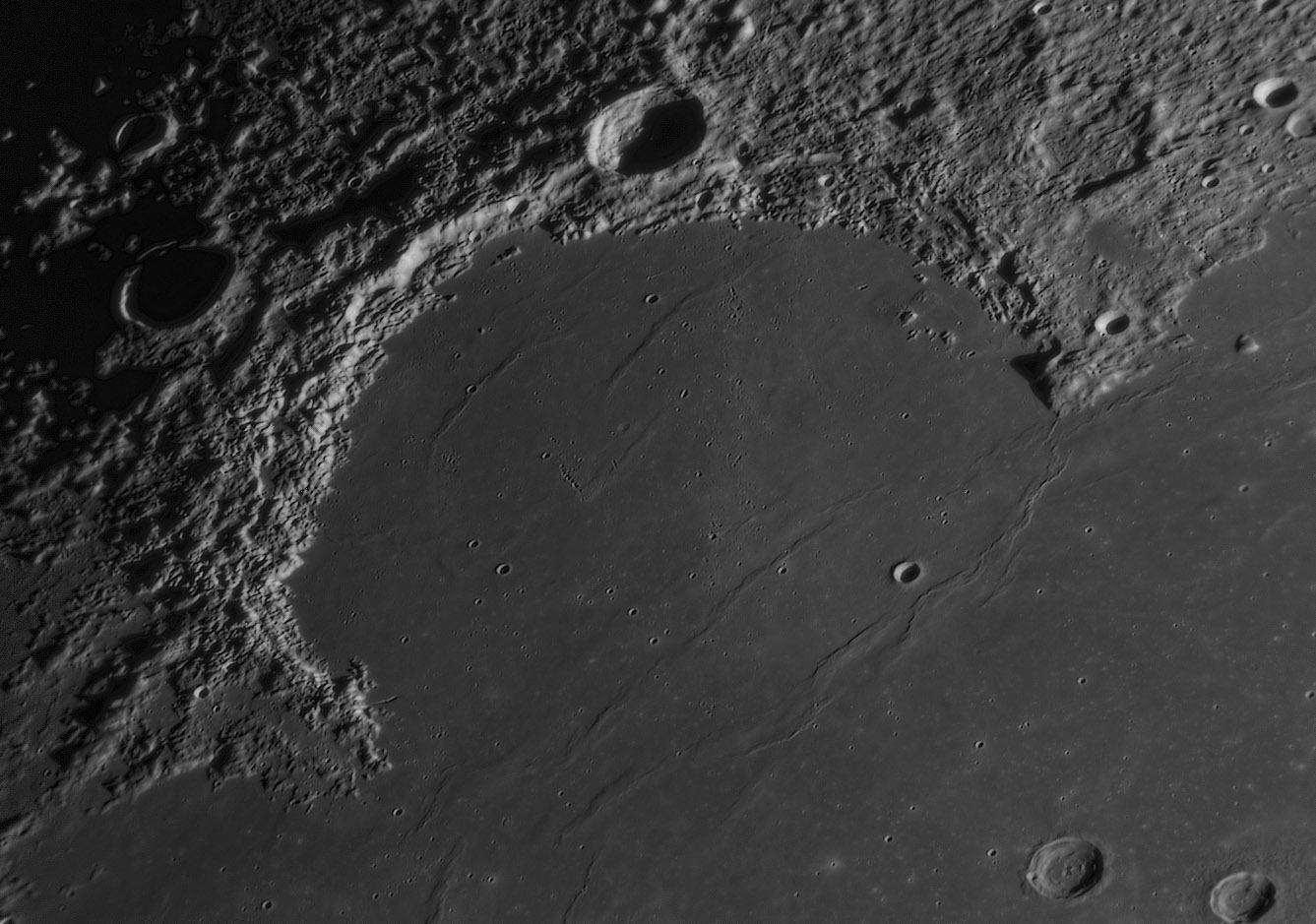March 24, 2013
Dents, Chains And Superposition
image by Michael Wirths, Baja California, Mexico
Everytime LPOD shows an image of a famous area I try to find something new to say.
For a recent Iridum image it was the use of topo data to understand why an Imbrium
lava flow stopped where it did. On Mike's new image there are three things I haven't
discussed before. Mike noticed the small shallow crater near the center of Iridum, and
there is a second one close to the northern edge of the Iridum lavas near Bianchini H.
The ghost crater near the center has a slight raised rim and is about 6.5 km wide and
80 m deep, and the dent-like one near H is a little smaller in diameter and only 50 m
deep (according to transects with the QuickMap Path tool). Such shallow craters are
usually interpreted as impact craters formed on an earlier surface and covered by sub-
sequent lava flows. A second feature of interest is the line of secondary craters that
diagonally crosses the bay and ends by the dent near H. We know these are secondary
craters because there is a line of them, they lie on a faint ray, and they seem to be radial
to Copernicus. A shorter line of touching secondary craters is west of the center ghost
crater, and other clusters and short lines are visible. In fact, other than the largest half
dozen or so craters it is likely that the majority of small craters within Iridum are second-
aries. This is because so many appear to be in groupings or associated with bright
splotches, and because other studies on both Mars and the Moon demonstrate that at
small sizes (typically less than 4-5 km) the majority of craters are secondaries; makes
it dangerous to count small craters to determine ages. The third feature in this image is
the thickly ejecta-draped Maupertius crater at upper right. Three major ribbons of ejecta
are generally radial to the Sinus Iridum impact crater, showing that Maupertius was there
before Iridum formed. Bianchini at top center obviously formed after Iridum because it
cuts Iridum's Jura Mountains rim. Notice however, that no ejecta from Bianchini are visible
on the nearby lavas so we can bracket the time of Bianchini's formation to the interval
between the formation of the Iridum crater and when the topmost Iridum lavas erupted.
Chuck Wood
Technical Details
Mar 22, 2013. Starmaster 18" (Zambuto optics), ASI120MM camera, 2.5X's powermate
barlow, R/IR filter, Firecapture, and PS CS, topaz infocus
Related Links
Rükl plate 10
21st Century Atlas chart 19.
Mike's Baja Dark Skies Inn
COMMENTS?
Click on this icon File:PostIcon.jpg at the upper right to post a comment.




